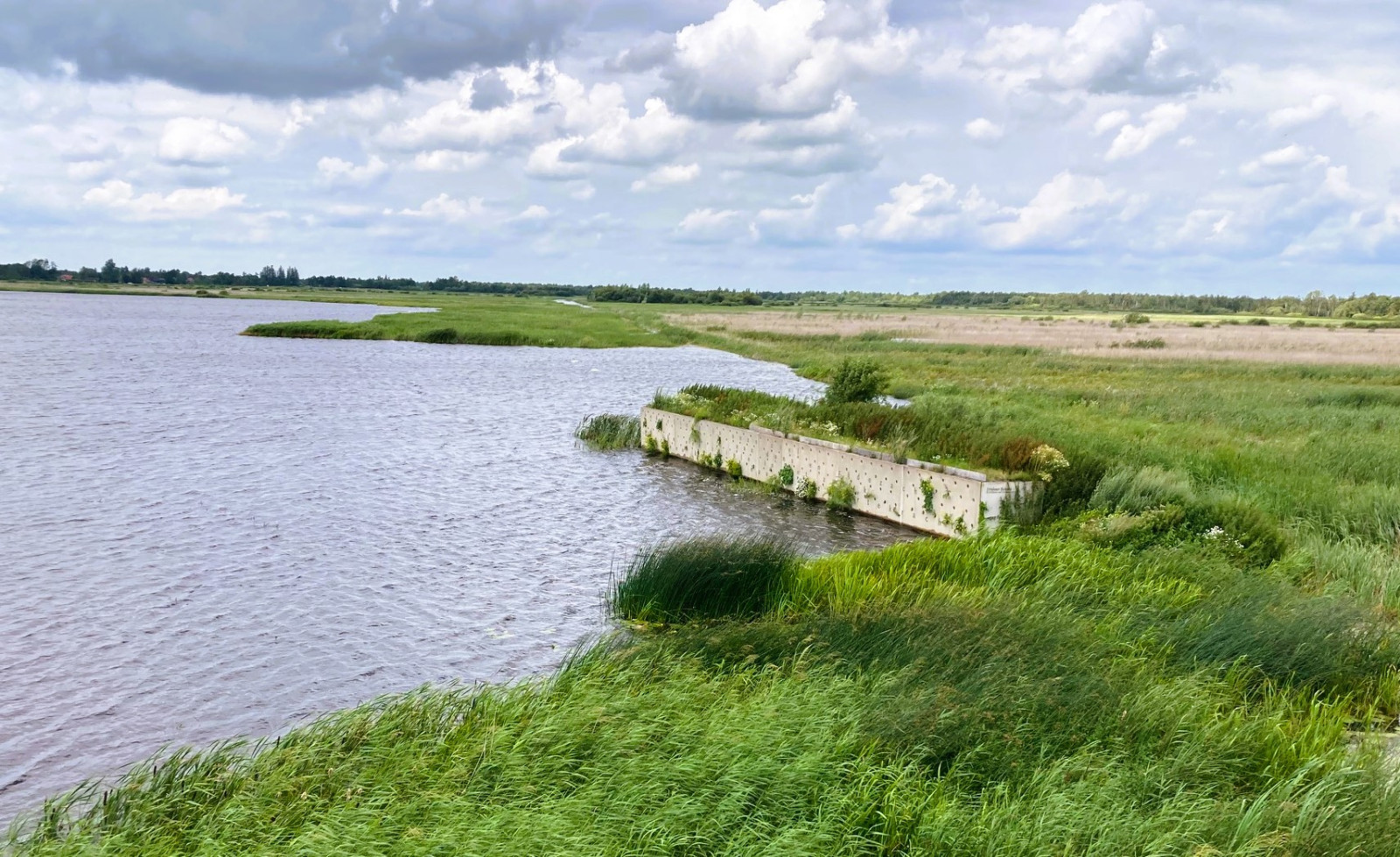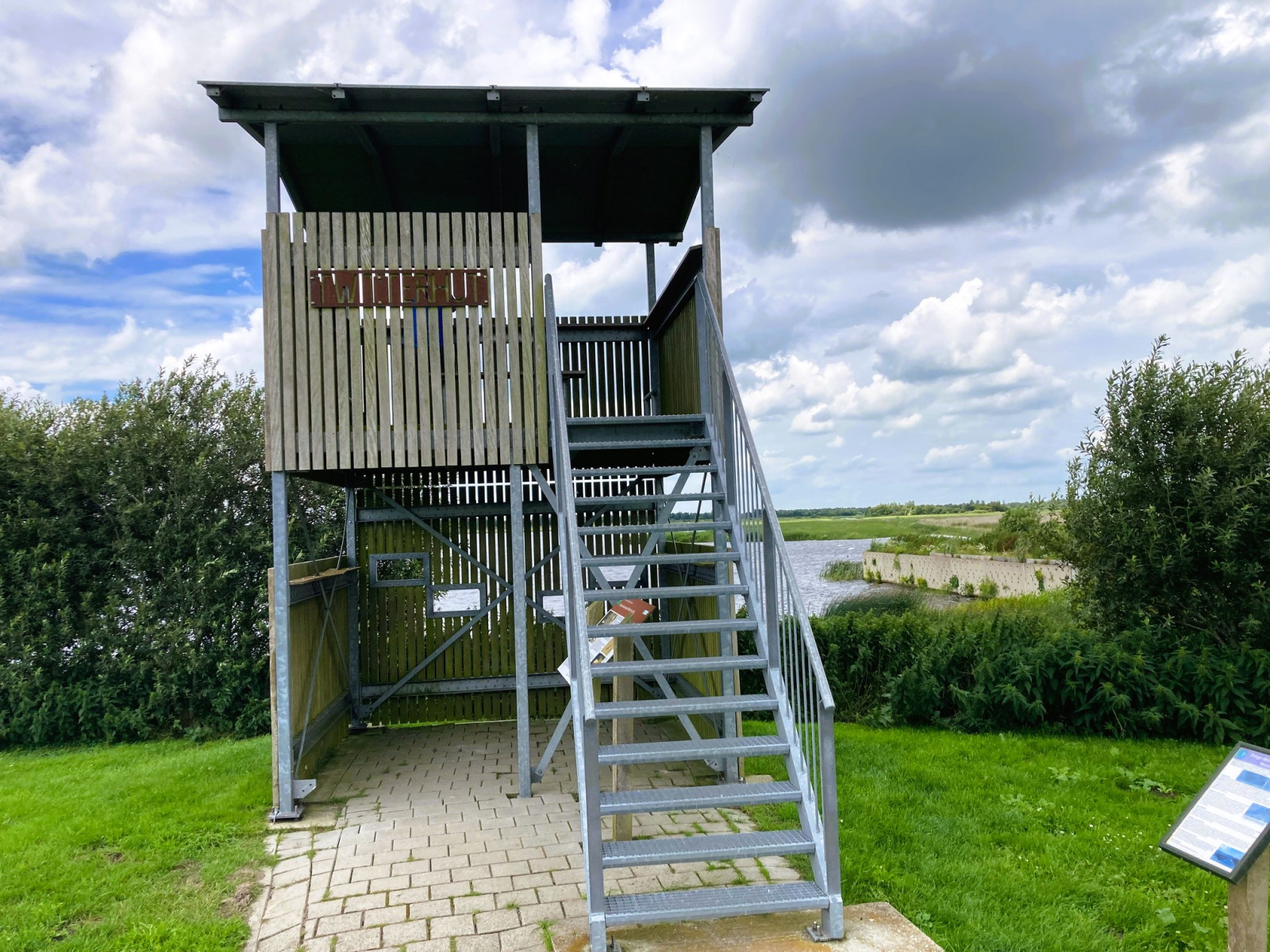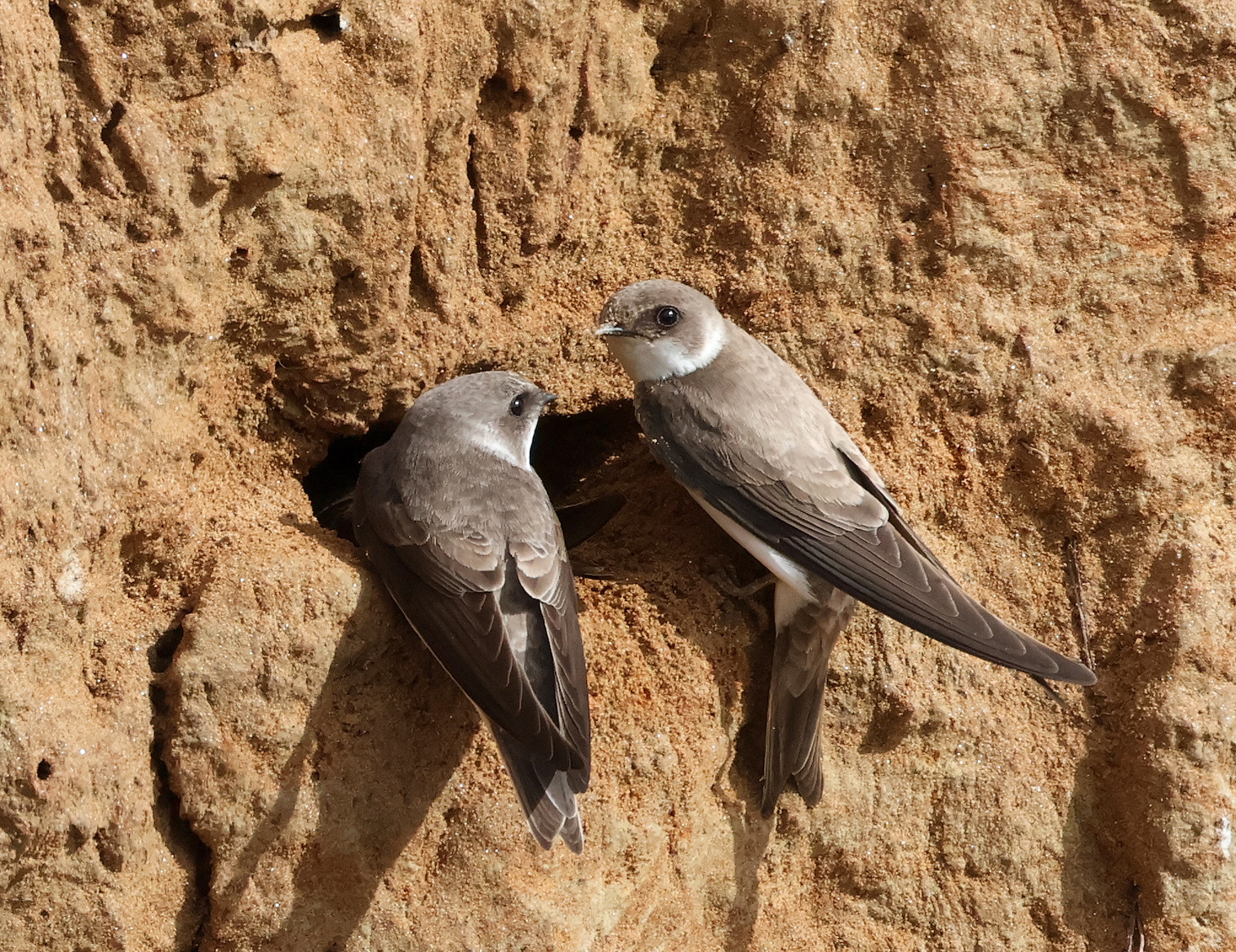Description
Wetering Oost is a polder of which a large part is flooded all year round. This lake can be seen beautifully from the Twitterhut hide, as well as the "ribs" from which the Weerribben owes its name. The hide offers a unique view of Lăstun de mal, which breed here in the summer in the special breeding wall that was installed in 2014. It is a perfect foraging area for swallows because of the many insects that live in the Weerribben. The beautiful Stârc roșu can often be seen here, especially flying. In addition, there is also the chance of seeing Lopătar, Egretă mică or even the Stârc de cireadă. The sounds of Grelușel de stuf and Cârstel de baltă can be heard from the reeds, especially in the morning and evening, and Gușă vânătă and Presură de stuf can also be seen. In winter there are mainly ducks like Rață pestriță, Rață mică and Ferestraș mic, but also Egretă mare and with la bit of luck you can spot Buhai de baltă and Pițigoi de stuf.
_________________________
Nederlands: Wetering Oost is een polder waarvan een groot deel het hele jaar door onder water staat. Vanaf kijkhut de Twitterhut is deze plas mooi te zien, evenals de "ribben" waar de weerribben zijn naam aan heeft te danken. De hut geeft een uniek zicht op Lăstun de mal, die hier in de zomer broeden in de speciale broedwand die in 2014 geplaatst is. Het is een perfect foerageergebied voor zwaluwen vanwege de vele insecten die leven in de Weerribben. De mooie Stârc roșu laat zich hier vaak, vooral vliegend, zien. Daarbij bestaat er ook de kans op het zien van Lopătar, Egretă mică of zelfs de Stârc de cireadă. Vanuit het riet zijn de klanken van de Grelușel de stuf en de Cârstel de baltă vooral in de ochtend en avond te horen en verder onder meer de Gușă vânătă en Presură de stuf te zien. In de winter zijn hier vooral eenden als de Rață pestriță, Rață mică en Ferestraș mic, maar ook Egretă mare en met geluk Buhai de baltă en Pițigoi de stuf te zien.
Details
Access
The car or bicycle can be parked in front of the Twitterhut. The hide has an upper floor with a beautiful view, but also a special ground floor for wheelchair users, with a view of the Lăstun de mal wall. A circular walk is also possible, where you can also park at the A.F. Stroinkweg (klinkerweg) near the bridge or at the Woldlakebos car park. The circular walk of more than 5 km (see the map) combines the Wetering East with the forest of Woldlakebos.
_________________________
Nederlands: Voor de Twitterhut is de auto en fiets te parkeren. De Hut heeft een bovenverdieping met mooi uitzicht, maar ook een speciale benedenverdieping voor rolstoelgebruikers, met uitzicht op de oeverzwaluwwand. Een rondwandeling is ook mogelijk, waarbij ook geparkeerd kan worden aan de A.F. Stroinkweg (klinkerweg) bij de brug of op parkeerplaats Woldlakebos. De rondwandeling van ruim 5 km (zie de kaart) combineert het Wetering Oost met het Woldlakebos.





.jpg)
